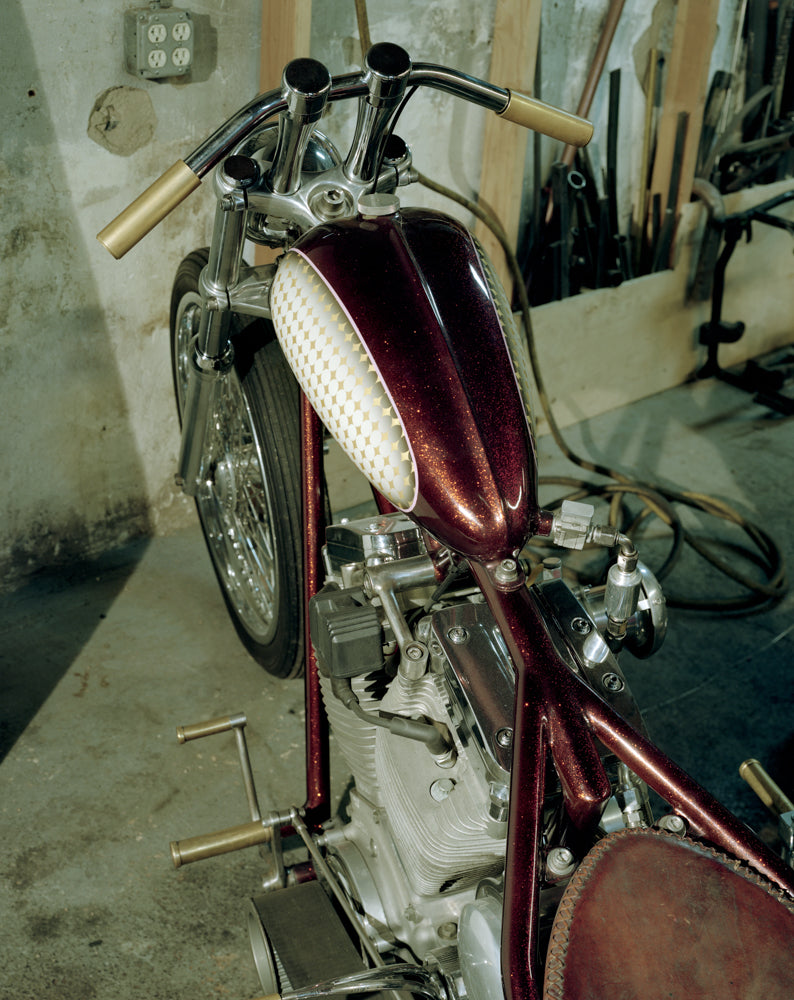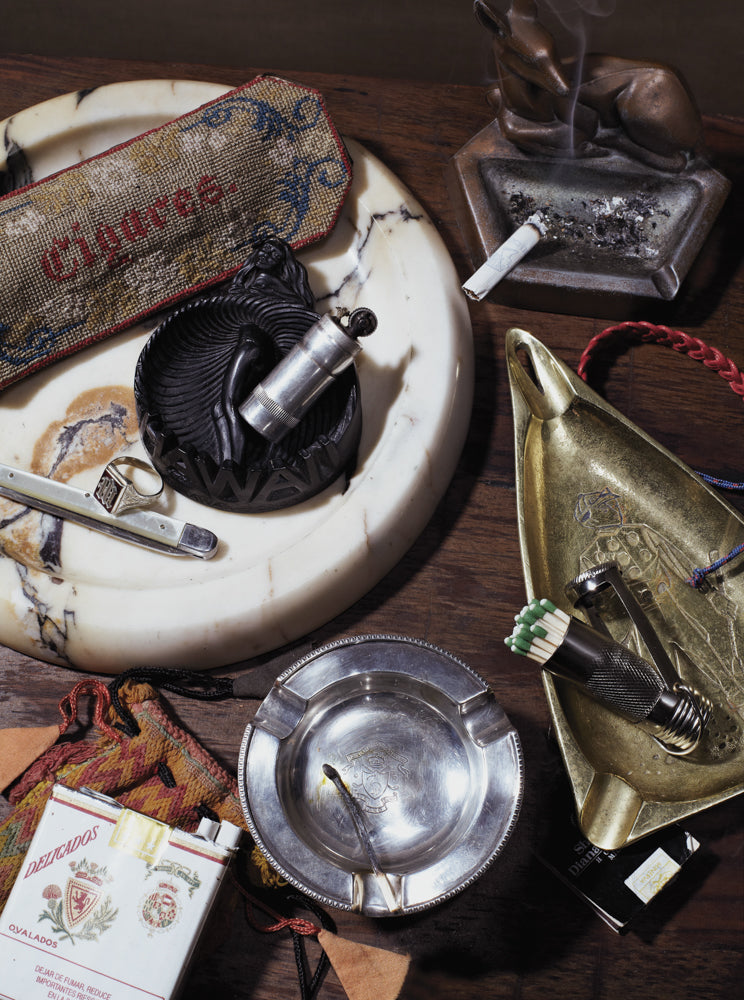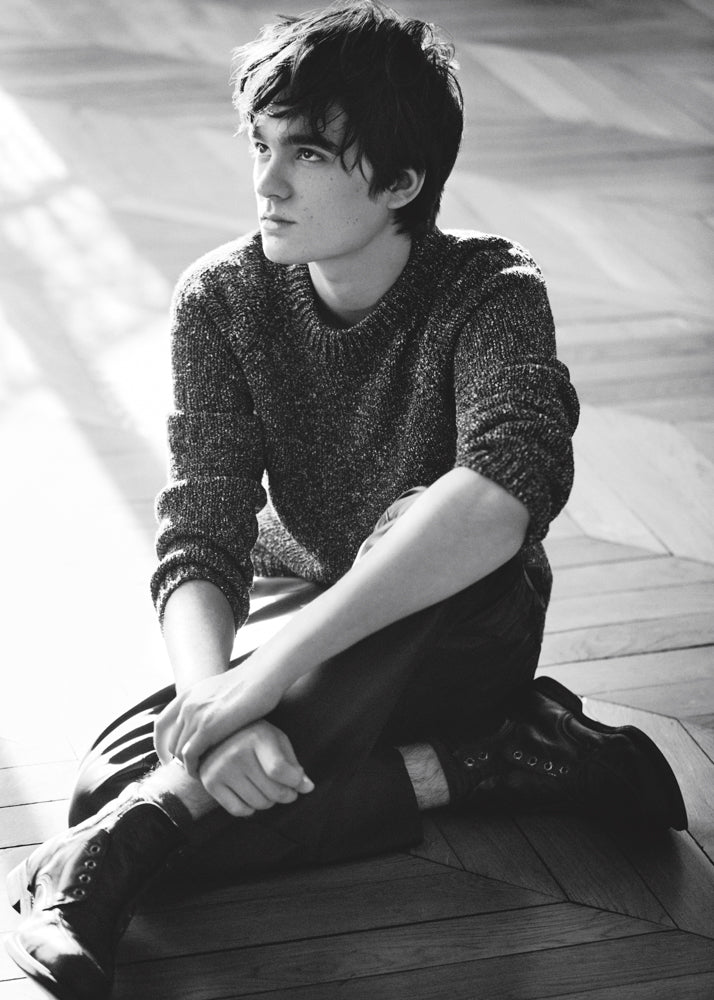
Chop Shop
CHOP SHOP, A RUMBLE IN BUSHWICK

Bushwick, Brooklyn used to be the bad-ass part of town you wouldn’t visit unless you were dumping a body or scoring drugs. The streets had a reputation that has resisted gentrification until recently. Johnson Avenue, where John Copeland has lived and worked since 1998, is no different. Heavy trucks still rumble down the broken pavement past time-worn, red brick industrial buildings that are now grudgingly being converted into spacious artist studios and trendy, late night restaurants. Copeland takes it from here:
I moved into the building at the end of the summer in 1998. At that point the neighborhood was pretty desolate. It was mostly industrial with little pockets of Puerto Rican and Dominican families and occasional packs of wild dogs from the scrap yards. It’s changed a lot.
I had the top floor of the building, and the ground floor was parking only. There was a crackhead named Donald living in what is now my work area. He would get rid of the building’s trash in exchange for being allowed to stay here. On the floor above, I had a large loft set up as a painting studio. The New York motorcycle scene was still an off-to-the-side subculture.


When I first got here from California I had bought a ’71 Triumph Tiger. I wanted a Harley — a Panhead or a Shovelhead — but I just couldn’t afford it at that point. The garage was just a mechanic space; I was hand-wrenching and didn’t have fabrication equipment. It was all about learning. Neil Fenton and I started buying cheap Triumph projects. Building them up to sell them. First thing we bought with the money was a TIG welder. Then we found a milling machine. Somebody else got a lathe. We learned how to use them all. The whole process evolved and the more we learned the more things opened up.
At that point the riding community in the city was limited. Neil and I would ride around and try to talk friends into getting bikes. Back then you kind of knew everyone who had an old bike. That’s how it used to be. You bought a manual and figured out how to fix it. I met Hugh Mackie (Sixth Street Specials) within the first 6 months or so of living here.
Hugh was very generous with his knowledge. He didn’t try to keep it secret. This was before you could look everything up on the Internet. It is interesting to see how the original designers developed these bikes. There’s a history of experimentation and process; the old bikes are a mix of practicality and aesthetics.
Having a shop and a garage is basic. You need a space to keep your tools and a work table set up where you can work on shit. We all got started fixing up bikes in the street, which can be difficult. To get a space where you can work changes everything. It builds on itself. You get some tools and learn how to use them. You learn how to weld and everything goes from there. All these possibilities open up and your skills develop.


There are a lot of different aspects to building a custom motorcycle. The fabrication part of it. The foot controls or the handlebars, the seat supports. You can be creative with the form of it, the design and the way it looks. Then there’s the motor… There is less creative freedom in there but it’s different. Do you want to build something that’s going to get raced, or build something to last? Do you want it to run on pump gas or on a different mixture? It depends on how the bike is going to get used, that’s where the form is following the function. Learning creative solutions to fixing things, the physics of how motors work. That’s part of what is so great about it. It’s the problem solving.
All the bikes I built are set up to work right in New York City. We ride rigid bikes, sometimes with old Springer front-ends which don’t necessarily work as well as they should on the city streets. The streets are really fucked up here. There are huge potholes, tight traffic, and everyone is trying to run you over. You figure out how to make something that looks right but still holds up. As bad as some of the streets are here, you might as well be riding motocross. We have to consider the aesthetics, but we don’t want the bike to fall apart on the street. There’s no cushion here. There’s no safety zone. It’s a very intense ride.


